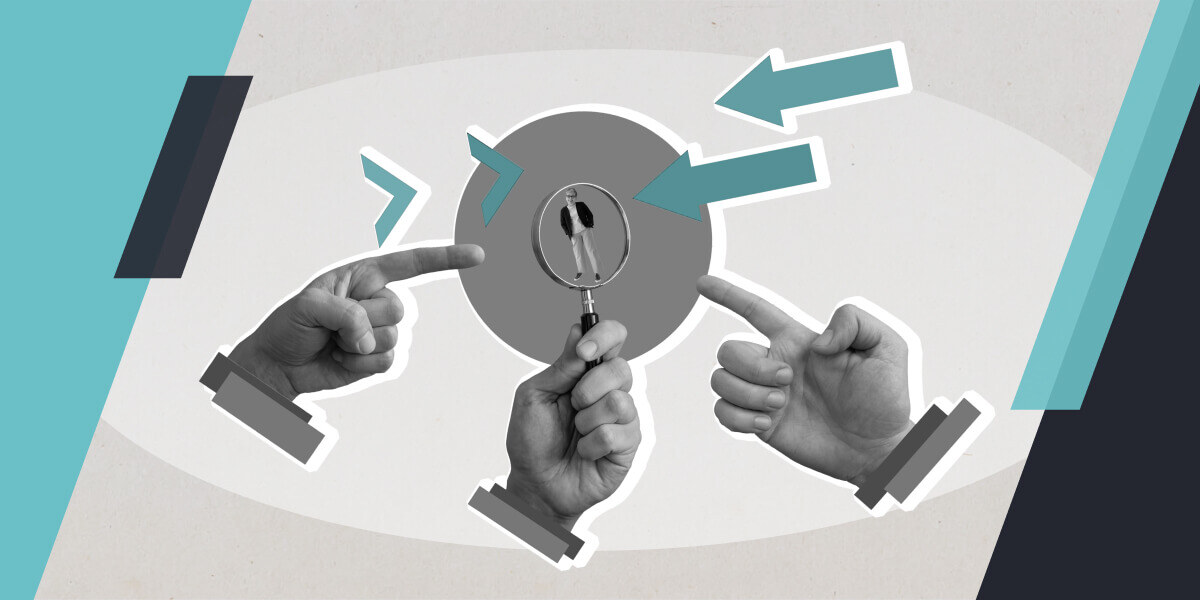
It's the age of the attention economy, and B2B prospects are as distracted as everybody else. Here's how marketing personalisation can help win back the focus of an audience lost to an infinite digital scroll.
The attention economy is a brutal place
"Understanding and managing attention is now the single most important determinant of business success."
From: The Attention Economy: Understanding the New Currency of Business, Davenport and Beck
That was the view of media researchers back in 2001 when Instagram and TikTok weren’t even a glint in a developer's eye!
As media shifted to a multi-screen, multi-platform world - marketers knew they needed to find innovative ways to speak to a permanently distracted audience.
Videos and banner ads, guerilla advertising, direct mail, and cold calling all tried to halt us in our 'infinite scroll' through life.
How attention-seeking switched us off
Soon, we were overwhelmed by it all.
Ad blockers, call screening, social media lurking - were the different ways we chose to avoid the attention of marketers.
For B2B customers, the movement was the same: a gradual retreat from engaging with advertising activity.
Meanwhile, the smart marketer's response was to shift to inbound and content marketing strategies. This new approach said: "Research and write relevant content, optimise it for SEO, and leads will come to you."
However, these methods led to overcrowding in the SERPS and social feeds. Millions of blogs, guides, and white papers were created, all trying to be helpful and vying to answer the same questions in often undifferentiated ways.
Something had to change.
How to win in the new attention economy
In 2024, marketing personalisation has become a key battleground in the war for customer attention.
B2B customers have seen the benefits of personalisation with Amazon, Netflix and a thousand other on-demand channels. Now, they want the same level of relevance and intuitive design when interacting with existing and prospective suppliers.
The brands that can most accurately predict our questions while serving content and experiences that speak directly to our needs will have a unique power to connect with customers in a world of undifferentiated words.
Benefits of B2B personalisation
- 73% of B2B executives believe that personalised marketing is essential to meet new customer expectations for relevance
- 80% of B2B buyers are more likely to engage with a brand that offers personalised experiences
- Companies that excel at personalisation drive 40% more revenue than those who don't
Impact on customer retention and revenue
- Personalisation can increase marketing spend efficiency by up to 30% and increase revenue by 5-15%
- Personalised customer experiences can increase revenue by 15-25% and reduce acquisition costs by 10-20%
But what is marketing personalisation?
Personalised marketing doesn't mean the automated substitution of names on emails and landing pages anymore. Instead, it involves analysing customer data to deliver personalised content that is hyper-relevant to specific buyer personas at each stage of their buyer's journey.
"The people coming to your site looking for solutions are on a complicated journey. It's going to take more than a robot who can learn their name to impress them."
Randy Frisch, F**k Content Marketing
What's the point of marketing personalisation?
Effective personalisation aims to make each customer feel as though every piece of communication is crafted especially for them, looking to enhance engagement, build trust, and improve the effectiveness of our marketing efforts.
The personalised digital experiences we deliver from our website, email communications, and social media feeds can frame the content we create in particular ways to maximise its impact on our target audience.
In doing so, we can extend and enrich the customer experience and lead prospects and customers on a path to sales conversion based on their personal preferences.
Here's how:
1. Predictive personalisation
Using AI and machine learning, manufacturers can predict customer behaviour and preferences, enabling them to tailor marketing strategies proactively. This trend is about anticipating needs based on data to personalise marketing touches before the customer even expresses the need.
Think about how Netflix or Spotify will predict and serve up entertainment and music suggestions.
B2B brands can do this, too!
Using internal analytics and third-party behaviour data, we can more effectively identify and score leads in our systems. We can also more precisely detect visitor intent signals, tailor email marketing nurturing sequences, and select the content we serve on their web visits.
2. Dynamic content delivery
This involves using technology to adapt the content displayed on websites or in emails based on the visitor's specific interests or past behaviour.
For instance, serving different content to a CEO and a technical manager based on their unique interests and challenges can lead to higher levels of engagement and conversion rates.
If we know the job role of our visitors we can serve each one of them a dynamic stream of content that offers the unique combination of guides, videos and suggested blog posts to address their most pressing questions.
However, delivering dynamic content requires careful planning. We must be sure we're creating an ongoing customer journey that consistently adds value for the customer. Otherwise, there are plenty of other places for them to go.
Here's Andy Frisch again:
"We can't expect our customers to work to find that next perfect asset. It's more likely they'll go back to Google's infinite scroll. We have to hook them into our infinite scroll."
3. Personalised video content
Video works to cut through the noise. We can use it successfully to help vary the content offerings that make up our customer journeys.
But there's still a lot of it out there.
Personalised videos that address specific customer needs, applications, or pain points can significantly enhance engagement and effectiveness in marketing campaigns.
The company Idamoo are doing extraordinary work splicing customer details into marketing videos on the fly to create compelling experiences.
Imagine the impact of personalised video factory tours or new equipment demonstrations as we try to persuade our prospects about the tailored services they'll receive from us.
4. Orchestrated personalisation across channels
Orchestrated personalisation across channels involves creating campaigns that shift between different kinds of media, continuing conversations across platforms in creative ways.
With tools like HubSpot, we can design campaigns that flow seamlessly from awareness to decision-making phases, with actions in one channel triggering follow-up activity in others.
Imagine a campaign about sustainable manufacturing that engages with different personas in different ways. We could use automation and personalisation tools to integrate social media engagement, retargeting ads, email marketing campaigns, webinars with segmented breakout sessions, and personalised follow-up content.
Metrics and optimisation strategies, including analytics tracking, A/B testing and feedback loops, could be used to refine experiences on the fly, enhancing engagement and driving better business outcomes.
Can it be done at scale?
With lead scoring, intent data, marketing automation and personalisation tools, it's possible to create content experiences tailored to specific personas in ways that prime them for sales conversion.
But how do you create all the bespoke content required?
Once a business has core content in place, it can be quickly repurposed to support particular account-based experiences.
We can slice and dice it, repurpose it, re-introduce it, and link from it - making it more relevant, readable and part of a customer journey that makes sense for each buyer persona.
Conclusion
B2B marketing personalisation doesn't have to mean the creepy use of first names or passive-aggressive begging to keep users subscribed to an email list ("Andrew - we miss you!").
Instead, it can mean orchestrating account-based experiences that make discovery, engagement, and conversion faster and more seamless than ever before.


.jpg)
.jpg)
